Outline – One-Year Expedition to ISS
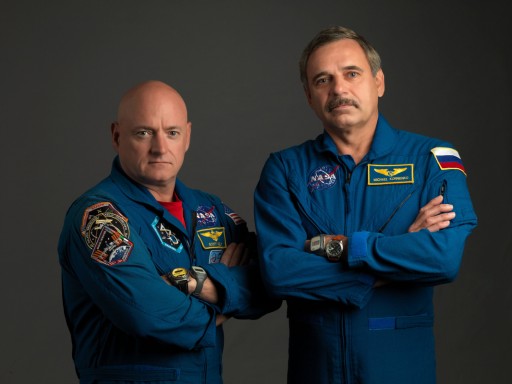
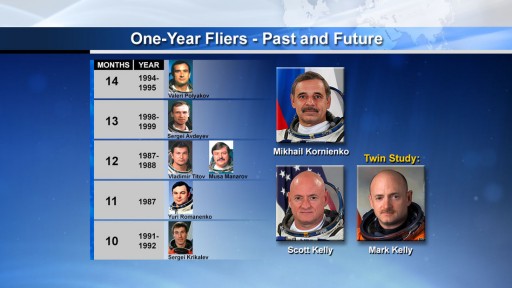
The idea of extending the duration of flights to the International Space Station to one year had been floating around for a while before NASA and Roscosmos agreed to conduct one such mission as a test, with each agency selecting one crew member to remain aboard ISS for one year. NASA had to choose from a number of applicants who were willing to commit to spending one year in space, selecting Scott Kelly for the mission who brings with him his twin brother Mark to participate as a ground control subject before, during and after the mission. Roscosmos selected veteran ISS crew member Mikhail Kornienko who already had a prior training experience with Scott Kelly as part of Kelly’s previous backup duty on Soyuz TMA-18. The official announcement of the one-year ISS mission was made in November 2012.
The one-year mission to ISS will not be the longest single spaceflight to be performed – four Cosmonauts have performed missions of one year and beyond, all to the Mir space station. At the top stands Valeri Polyakov with a mission of 438 days performed in 1994/95 followed by Sergei Avdeyev who spent 380 days in space in the closing years of Mir, from August 1998 to August 1999. Vladimir Titov and Musa Manarov performed a mission of exactly 365 days in 1987/88 aboard Mir. The longest mission to ISS was performed by the crew of Soyuz TMA-9, Mikhail Tyurin & Michael Lopez-Alegria in 2006/07 with a total duration of 215 days.
Mikhail Kornienko has made one prior mission to ISS as part of Expedition 23/24, logging 176 days in space. He comes from an engineering background working on rocket engines, also specializing in EVA equipment and launch operations. He was selected as a Cosmonaut in 1998 , but had to wait nearly 12 years to finally fly into space. During his mission to ISS, Kornienko performed one spacewalk of six hours and 42 minutes.
Scot Kelly is a former Captain in the U.S. Navy and also has an engineering background in aviation systems. As part of his career in the military, Kelly worked as a test pilot and logged over 8,000 flying hours. After his selection by NASA, Kelly served as a Pilot on Space Shuttle Discovery on mission STS-103 to the Hubble Space Telescope in 1999. His second flight was as a commander aboard Shuttle Endeavour for mission STS-118 that delivered the S5 truss to ISS. Launching on Soyuz, Kelly made his first long-duration mission to ISS as part of Expedition 25/26 in 2010/11. Overall, he logged 180 days in space as part of his three missions.
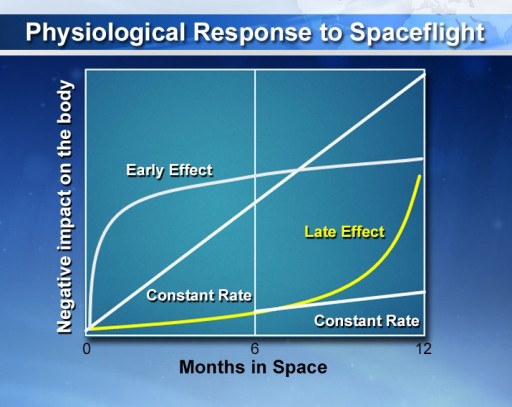
The space environment, characterized by microgravity and increased radiation exposure, has an effect on almost all bodily systems including physiological and psychological aspects. Typically, the physiological impacts of prolonged exposure to the space environment can be compared with an accelerated aging process – typical symptoms are a loss of muscle and bone mass, degradation of the cardiovascular and neurovestibular systems, and a significant degradation of the immune system. Balance disorders and behavioral changes are also observed in humans undergoing long-duration space missions.
For a six-month exposure to the space environment, abundant data is available through the previous Expeditions to ISS, Mir and the Salyut space stations, but crossing that threshold, only a handful of humans have ever undergone data gathering during a one-year flight. It is of great interest to see what happens between six and twelve months to extrapolate potential effects that even longer missions would have.
In the space environment, physiological degradation can occur on three different time scales – a constant rate that begins with the start of the mission and worsens over time at a constant speed, an early effect that manifests itself within the first weeks and months in space and then slows down in progression, and a late effect that is almost non-discernible during the first months in space before showing a rapid increase.
These late-effect physiological responses between the six-to-twelve month mission duration are the entire goal of the one-year mission to ISS. Even with just two crew members, the mission will identify risks associated with such effects that would need addressing for future missions to Mars and beyond.
The data delivered by Mir represents only five data points that are very basic, e.g. looking at a crew member’s ability to exercise over the course of the flight and post-flight health assessments, but lacking the in-depth look at the precise changes in different body systems or a study of potential mechanisms. With today’s technology, this first one-year mission will deliver a data set far surpassing those earlier missions.
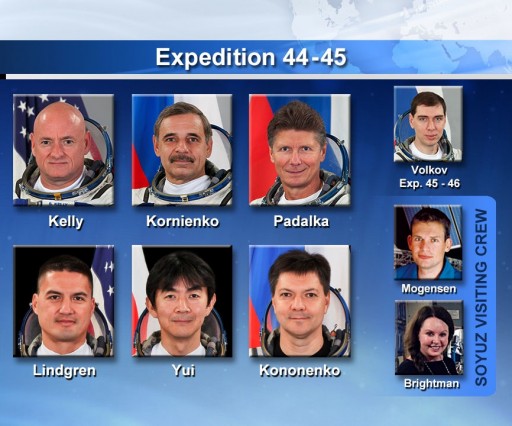
The one-year ISS mission will be facilitated by inserting a direct handover at the six-month mark in the mission to keep up with the 200-day orbital certification duration of the Soyuz spacecraft which requires the two crew members to launch and land on different spacecraft.
The setup for the direct handover will begin on August 28, 2015 when Padalka, Kornienko and Kelly will climb into their Soyuz TMA-16M docked to the Poisk Module for a 30-minute relocation over to the aft port of the Zvezda module that will be vacated two days prior by the Progress M-26M spacecraft. This relocation is necessary to allow the two docking ports used for crewed missions (Poisk and Rassvet) to be available for the ‘regular’ Soyuz missions.
Soyuz TMA-18M will lift off atop a Soyuz FG rocket on September 1 for a fast-track rendezvous to deliver Sergei Volkov to ISS for his six-month mission who will eventually provide Kornienko and Kelly a ride home after their year in space is up.
Utilizing the two available seats up on Soyuz TMA-18M and down on TMA-16M are singer Sarah Brightman, a space tourist flying a Space Adventures mission, and Andreas Mogensen, an ESA Astronaut conducting a short-duration science flight. The direct handover will last for ten days with nine people aboard ISS. Kornienko and Kelly will swap their Kazbek Seat Liners with Brightman and Mogensen to make the Soyuz switch official before Gennady Padalka takes the two short-duration fliers on their trip home on September 11.
Volkov, Kornienko and Kelly are expected to stay aboard ISS until March 3, 2016 for a flight duration of 184 days for Volkov and 342 days for Kornienko and Kelly.
Year In Space – Science
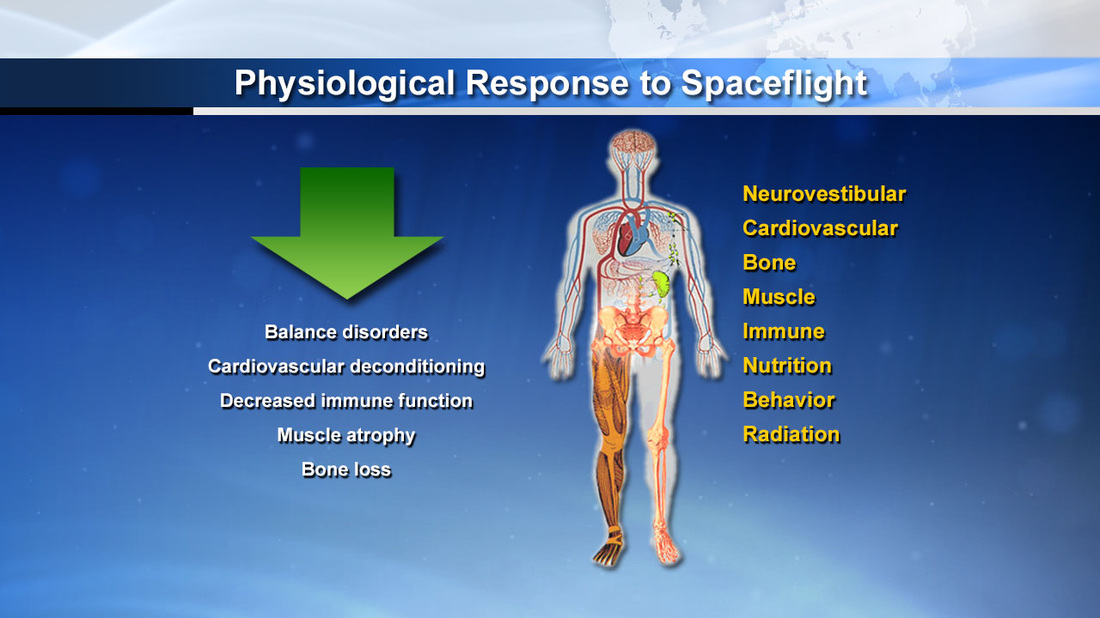
The data to assess and analyze physiological and psychological effects of the spaceflight environment beyond that six-month threshold will be gathered through the standard ISS research program which for Kelly and Kornienko will include a series of established experiments that have been in progress for years aboard ISS as well as a number of newly developed studies. 17 studies have been identified to be of particular importance for the one-year mission.
Field Test
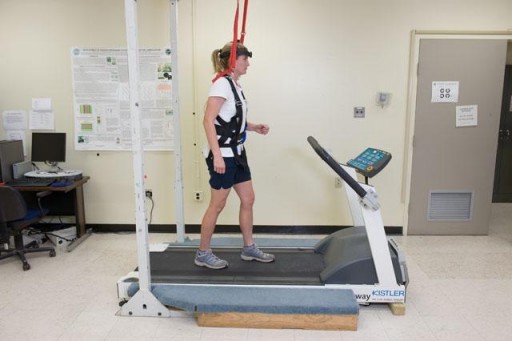
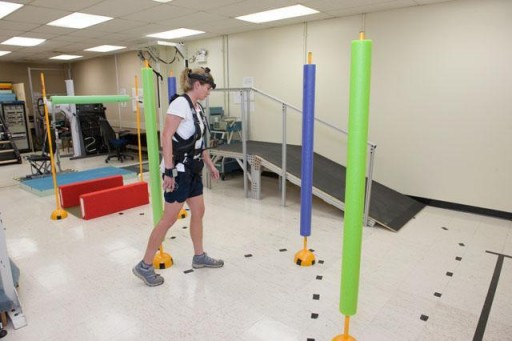
Field Test, going by the full name of Recovery of Functional Sensorimotor Performance Following Long Duration Space Flight, will assess the complexity, severity, and duration of physiological changes that have noticeable effects on a crew member’s health when returning to a gravity environment.
For crews returning from regular ISS missions, medical assistance is available immediately after landing to assist the crew and begin the process of rehabilitation. For a crew flying to Mars or another distant target, no such luxury will be present upon landing, requiring the crew members to be in a physiological state in which they maintain an ability to make sound decisions and perform basic tasks needed after landing such as reconfigurations of the spacecraft and the execution of science activities.
It is known that prolonged exposure to the space environment has negative implications on vision, balance, coordination, blood pressure, and the ability to walk which are all required abilities in a landing scenario on Mars. The Field Test study includes a series of tests performed by crew members before and after long-duration space flights to identify changes in physical abilities after prolonged exposure to microgravity which may have consequences for the design of countermeasures that target the physiological systems responsible for impaired functional performance.
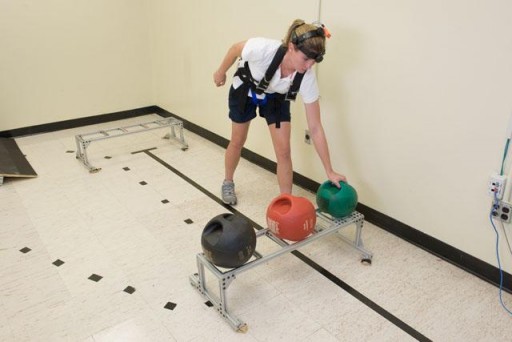
The investigation uses pre-flight testing to determine a crew member’s baseline and post-flight tests to quantify the deterioration of physiological abilities. These tests include a combination of functional tests and physiological measurements conducted in three sessions before the flight and at Return+1, +5, +10 and +24 hours plus sessions at landing +1, 4, 6, 15 and 30 days. A subset of the protocol is collected immediately after the crew’s return inside the medical tent at the Soyuz landing site to determine the immediate effects experienced by crew members after their return to gravity.
The tests include a Sit-to-Stand Test, the Recovery from Fall Test (standing up from a prone position and remaining upright for three minutes), balancing while standing on both feet for several minutes, stepping over obstacles and the Tandem Walk Test (walking ten steps heel-to-toe with eyes closed). During all tests, cardiovascular and other parameters are measured to quantify the performance of the crew members before and after flight.
Functional Task Test
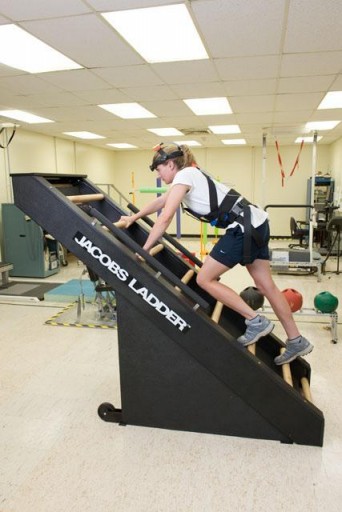
The Functional Task Test also known under its full name “Physiological Factors Contributing to Postflight Changes in Functional Performance”expands on the Field Test by adding more complex tasks that a crew may need to complete not immediately after but in the days following their landing, such as reconfigurations of their spacecraft, repairs, regular maintenance and extravehicular activities for science data gathering.
The methodology is the same as for the Field Test – having a crew member conduct three pre-flight sessions for use as a baseline and repeating the tests at Return +1, +6 and +30 days.
The functional tests include a Seat Egress and short-distance walk around obstacles, the recovery from fall and stand, transporting and manipulating objects, generating torque to open a hatch, climbing a ladder, a standard EVA training task, and jumping exercises to simulate the jump down from landing vehicles.
Physiological measurements include plasma volume determination, fine motor control tests, Posturography, muscle performance tests and treadmill locomotion (walking on a treadmill combined with a vision test).
Cognition
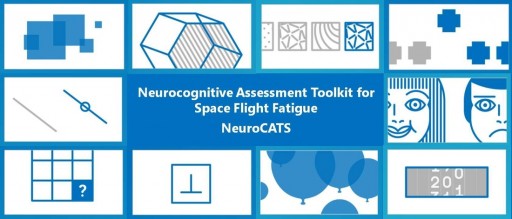
Cognition, also known as Individualized Real-Time Neurocognitive Assessment Toolkit for Space Flight Fatigue uses a battery of tests to measure how spaceflight-related physical changes (microgravity, lack of sleep quality, diet) can affect the cognitive performance of humans during long-duration space flights. The experiment consists of ten brief computer-based tests that cover a range of cognitive functions and deliver immediate feedback on current and past results. A good neurocognitive function for effective performance during space missions makes an investigation of sleep and fatigue in space an absolute necessity.
The testing operation consists of a sleep questionnaire and subjective evaluations at the beginning followed by the ten tests that focus on: sensor-motor ability, visual object learning and memory, attention and working memory, abstraction, spatial orientation, emotion recognition, abstract reasoning, complex scanning & visual tracking, risk decision making, and vigilant attention and psychomotor speed.
Neuromapping
Neuromapping, or Spaceflight Effects on Neurocognitive Performance: Extent, Longevity, and Neural Bases, determines whether long-duration spaceflight causes changes to the brain, including brain structure & function, motor control and multi tasking – also determining how long it takes for the brain to recover from possible changes once the flight is over. Previous missions indicate the movement control and cognition are affected in microgravity.
Neuromapping will use functional magnetic resonance brain imaging (fMRI) to asses any changes to the crew members’ brains comparing before and after scans. Behavioral and sensorimotor assessments are used to assess changes in perception, motor control, memory, attention and executive function. The overall goal of the experiment is to identify the neural mechanisms and operational risks of spaceflight-induced changes in behavior, and the characterization of the re-adaption process to the gravitational environment associated with the assessment of post-flight changes in brain structure.
Pre- and post-flight evaluations are comprised of card rotation (pencil & paper exercise consisting of mentally rotating target shapes to indicate whether they are the same or different from target shapes), mental rotation (memorizing a 3D object and matching it to a re-oriented 3D cube assemblage), Rod & Frame Test (aligning a rod to vertical within a tilted frame), digit-symbol substitution (decoding shapes into numbers using a presented key), functional mobility test (obstacle course on foam surface), bimanunal motor control (placing 25 keyed pegs into their slots using both hands while seated), Vestibular Evoked Myogenic Potential Test, Vestibular contribution to Postural Stability (maintaining balance on a sway-referenced support with eyes closed).
Pre & post-flight Neuroimaging includes structural MRI scans, Functional MRI during different tasks (sensorimotor adaption tasks, spatial working memory tasks, dual tasking), Resting state functional connectivity MRI & Diffusion weighted imaging. Inflight testing includes: Mental Rotation, Sensorimotor adaptation, and dual tasking exercises – all using a computer-based assessment tool.
Journals
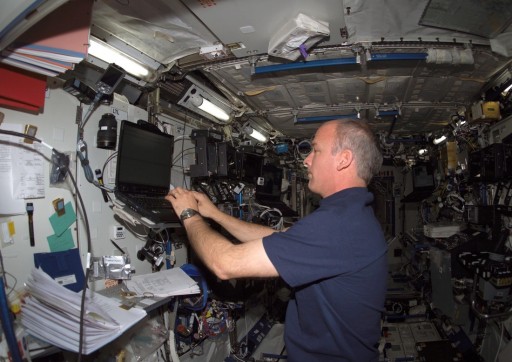
Journals – electronic journals will be kept by the crew members to allow psychologists to study behavioral issues that are associated with the isolation and confinement over long-duration space missions. Journals from 6-month ISS mission have amounted to a total of 1,100 written pages, but no data beyond those six months is available making this an interesting opportunity to study the impact of isolation in the confinements of ISS over a longer period.
Methods applied to the analysis of the journals include the evaluation of the frequency certain issues are raised reflecting the importance of particular items. The tone of each entry is analyzed and the phase of the Expedition is also of interest. Typical issues discussed in the journals are Work, Outside Communications, Adjustment, Group Interaction, Recreation/Leisure, Equipment, Events, Organization/ Management, Sleep and Food. The aim of this study is to provide recommendations on how to improve future spacecraft and mission design in order to maintain an optimal long-term psychological health in all crew members.
Sleep Studies
Sleep-Wake Actigraphy and Light Exposure on ISS studies whether inappropriately timed lighting or sleep shifting can result in circadian misalignment during spaceflight leading to a reduced sleep quality and daytime fatigue in crew members. Previous data shows that crew members experience a circadian misalignment and sleep deficiency during 6-month missions.
The ISS-12 experiment monitors the ambient light exposure and crew member activity and collects data on the subjective evaluation of sleep and alertness. Ambient light and activity are monitored via a wrist-worn actiwatch that delivers actiwatch spectrums that are put through bio-mathematical models of sleep and light to predict circadian phase. Sleep logs will be kept by crew members as a subjective assessment of sleep quality and duration. It is hoped that this investigation can deliver requirements for lighting, sleep-shifting protocols and workloads for future space exploration missions.
The Reaction Self Test is one of the oldest studies ongoing aboard ISS, consisting of morning and evening sessions with a computer-based vigilance test performed prior to, during and after flight at different frequencies as required by the study. The sessions consist of short five-minute tests that provide an objective feedback of a crew member’s vigilance and allows an assessment of performance capability. Test sessions are also performed around sleep shifts and periods of particular tasks such as visiting vehicle support and EVAs.
Ocular Health
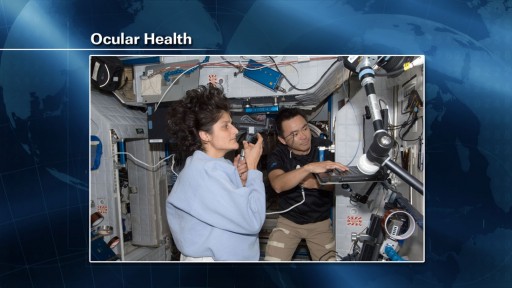
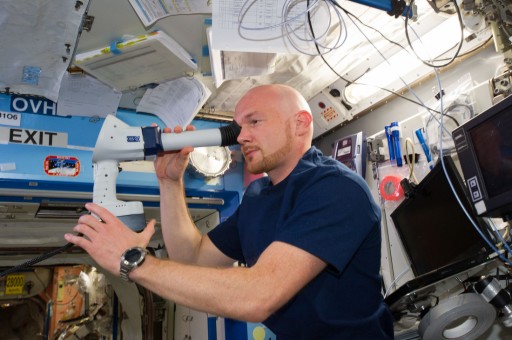 A human physiology study that will keep the crew busy many days of their mission is Ocular Health. Its full name is Prospective Observational Study of Ocular Health in ISS Crews. The Prospective Observational Study of Ocular Health in ISS Crews (Ocular Health) protocol aims to systematically gather physiological data to characterize the Risk of Microgravity-Induced Visual Impairment/Intracranial Pressure on crewmembers assigned to a 6 month ISS increment,” the NASA experiment overview said.
A human physiology study that will keep the crew busy many days of their mission is Ocular Health. Its full name is Prospective Observational Study of Ocular Health in ISS Crews. The Prospective Observational Study of Ocular Health in ISS Crews (Ocular Health) protocol aims to systematically gather physiological data to characterize the Risk of Microgravity-Induced Visual Impairment/Intracranial Pressure on crewmembers assigned to a 6 month ISS increment,” the NASA experiment overview said.
It is known that some (not all) astronauts in orbit experience changes in visual acuity (visual clarity) and intraocular pressure as a result of fluid shifts within the body as it is subjected to microgravity. About 20% is astronauts flying to ISS have reported these kinds of changes. Test subjects will undergo pre-flight, flight and post-flight testing of their eyes using a variety of techniques.
Near and far visual acuity will be tested for each eye independently using a Snellen chart and Amsler grid testing. Also, intraocular and blood pressure measurements are part of the study as well as ocular ultrasounds to identify changes in globe morphology, fundoscopy to detect retinal changes, threshold visual field testing to assess central and peripheral vision changes, contrast sensitivity changes as a measure of visual function, and vascular compliance calculations. In-flight measures will be taken on Flight Days 10, 30, 60, 90, and 120 as well as 30 days prior to return.
Pre- and post-flight examinations include refraction testing, pupil reflex testing, extraocular muscle balance and function checks, CT and MRI scans and split lamp biochemistry and high resolution retinal photography.
“The purpose of this study is to collect evidence to characterize the risk and define the visual changes and central nervous system (CNS) changes observed during a six month exposure to microgravity including postflight time course for recovery to baseline. This study will gather information that can be used to assess the risk of Microgravity-Induced Visual Impairment/Intracranial Pressure (VIIP) and guide future research needs,” the experiment overview notes.
Fluid Shifts
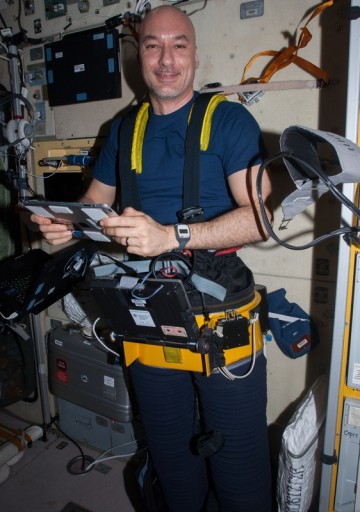
Fluid Shifts Before, During and After Prolonged Space Flight and Their Association with Intracranial Pressure and Visual Impairment. Known as the Fluids Shift study, this experiment is one of the most complex integrated experiments ever performed on ISS using pieces of US and Russian hardware to attempt to quantify the amount of fluid shifting from the lower body to the upper body when transitioning from a gravity to a microgravity environment.
This will also lead to an understanding of effects of the fluid shift on fluid pressure in the head, changes to vision and eye structure. Effects on the eye caused by elevated intracranial pressure include globe flattening, choroidal folds, and alteration of the optic nerve.
The fluid shifts study uses a number of measurements – fluid compartmentalization (determining total body water by using heavy water as tracer, determining extra and intracellular water content, plasma volume & interstitial volume), ultrasound measurements to track the thickness of tissues on the forehead, tibia, calcaneus, ultrasounds to measure vascular dimensions, MRI for the measurement of vascular dynamics, ocular measurements (optical coherence tomography, tonometry, ultrasounds for structural changes), cardiac variables using ultrasounds, and intracranial pressure measurements.
The study will utilize the Russian Chibis Lower Body Negative Pressure suit that shifts fluids back to the lower body to provide comparison measurements with those made in pure microgravity and on Earth.
Biochemical Profiles
The Biochemical Profiles study obtains blood and urine samples from long-duration space travelers before, during and after space flight to monitor specific proteins and chemicals that act as biomarkers and allow an assessment of particular biological, biochemical, biophysical processes that affect the health of a human. Conducting frequent sampling allows for the generation of a database of samples and test results which allows scientists to study the effects of spaceflight on the physiology of humans and it also allows an assessment of countermeasures associated with exercise and nutrition. The experiment consists of eight in-flight sessions comprised of a fasting blood draw and 24-hour urine collection. Body mass measurements on a monthly basis are also evaluated as part of the study.
Cardio Ox
Cardio Ox, going by the full name of Defining the Relation Between Biomarkers of Oxidative and Inflammatory Stress and Atherosclerosis Risk in Astronauts During and After Long-duration Spaceflight, aims to determine whether biological markers of oxidative and inflammatory stress are elevated during and after prolonged exposure to the space environment and whether this presents additional risks of atherosclerosis. Oxidative and inflammatory damage can be the result of increased radiation, psychological stress, reduced physical activity, diminished nutritional standards and hyperoxic/hypoxic exposure. The study monitors biomarkers in urine and blood samples; arterial structure and function is tracked via ultrasounds and the measurement of carotid intima-medial thickness and brachial artery flow-mediated dilation is made for up to five years after landing to track long-term changes for prediction of atherosclerosis
Integrated Immune
The Integrated Immune study has the goal of assessing the clinical risks that come with the adverse effects of the spaceflight environment on the human immune system, implementing an immune monitoring strategy compatible with measurements in space. Blood, saliva and urine samples are collected before, after and during the flight to measure blood cell count, and stress hormones. Integrated Immune also looks at specific latent virus reactivation that is known to occur during space flight.
HipQCT
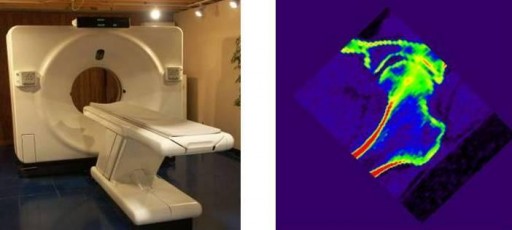
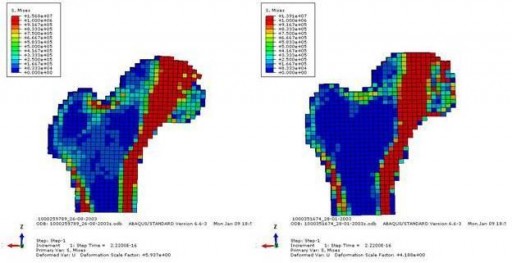
HipQCT is a feasibility study going by the full name of QCT Modality for Risk Surveillance of Bone – Effects of In-flight Countermeasures on Sub-regions of the Hip Bone. The operation of the study is quite simple while it offers a large return in data and insight.
Astronauts would be undergoing quantitative computed tomography (QCT) before and after their flight to detect changes in the structure of their hip bones in response to in-flight bone-loss countermeasures that are implemented aboard ISS.
The 3D bone measurements will determine fracture risk and will help define the response of hip bone structure to spaceflight, to countermeasures and to the return to Earth’s gravity.
Changes of the Cortical Bone and Trabecular Bone will be used to determine the effectiveness of on-orbit countermeasures that include physical exercise, a special diet and biochemically based countermeasures.
Results from HipQCT will help develop better countermeasures for future flights and also provide data on osteoporosis that is a growing problem on Earth.
Sprint

Sprint, a study in progress since 2011, has a full name of Integrated Resistance and Aerobic Training Study. It evaluates a high-intensity, low-volume exercise protocol to minimize the loss of muscle, bone and cardiovascular function but also minimizing the time spent with daily exercise.
Despite the 2.5-hours of exercise allocated per day, crew members returning from 180-day missions have shown a 11-17% decrease in muscle strength, a 10% decrease in muscular endurance, and a drop in bone mineral density of 2-7%. Preventing these conditions is the overall goal of countermeasure development. Better countermeasures will be a critical requirement for longer missions to distant targets. Sprint aims to develop a higher-intensity, lower duration exercise program using the Advanced Resistance Exercise Device (ARED) and the Combined Operational Load Bearing External Resistance Treadmill (COLBERT).
To asses the protocol, crew members conduct regular measurements of VO2max, heart rate (HR) response to submaximal exercise and ventilatory threshold. Monthly ultrasounds of the thigh and calf are used to evaluate spaceflight-induced changes in the muscle volume. Post-flight data on muscle and bone mass is compared to pre-flight measurements and to data from control subjects that use the regular exercise protocol.
Microbiome
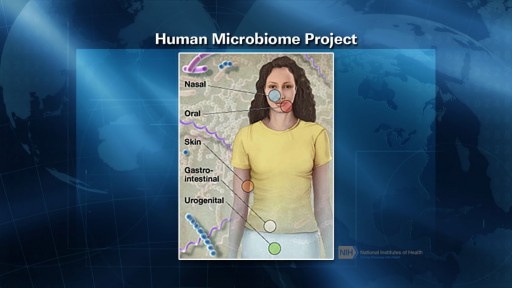
A study that began during Expedition 35/36 is called Microbiome with its full name: Study of the Impact of Long-Term Space Travel on the Astronauts’ Microbiome. The study will investigate the impact of long duration space flight on both, the human immune system and an individual’s microbiome. The microbiome is the totality of microbes that live in and on the human body at any given time and influence human physiology. Some consider the microbiome to be a “newly discovered organ” due to its importance for human physiology. In fact, there are about 10 times more microbial cells than human cells in and on the human body, but the microbiome only accounts for about 200 grams.
The study involves extensive sample collection from subjects. Crew members will undergo sampling before, during and after their flight to ISS. Samples include nasal and oral samples, skin swabs and optional gastrointestinal samples. These will be taken from a total of nine astronauts before flight, around flight day 7 and 90 and at return minus 14 days as well as post flight. In addition, ISS surface samples are taken to better understand the microbial environment the crew members are subjected to.
ISS surface swabs will be collected from the crewmember’s sleeping quarters, exercise equipment, handheld microphone, Cupola knob, and two air vents located within frequently used ISS modules using a swabbing device. In addition, drinking water is sampled. Also, the crew member’s take saliva and blood samples to determine cortisol levels as well as cytokines for stress level analysis. Finally, crew members complete Environmental Health and Hygiene surveys to obtain metadata including astronaut health and hygiene.
Data from the microbiome investigation will help determine the effect that long duration space flight has on the crew member’s microbiome which in turn affects general health, immune response and overall physiology of the individual. For future long duration missions beyond Earth orbit, knowledge about these physiological effects is required to keep the crew members in optimal condition.
Fine Motor Skills
Fine Motor Skills uses a tablet touchscreen application to monitor degradation in fine motor abilities over the course of an extended exposure to microgravity. A drop in fine motor skills can lead to problems when crew members are tasked with medical treatment, repairing sensitive equipment and interacting with touch-based equipment. Tests utilized by this study include multidirectional pointing, dragging, shape tracing, and object manipulation to create a knowledgebase that will allow scientists to evaluate the risk of fine motor performance decrements due to long-duration exposure to microgravity. Sessions are initially performed every five days for the first 120 days of flight before being performed only every ten days. Pre and post-flight sessions are also performed. Each session consists of the four tasks mentioned above and takes about 15 minutes to complete.
Habitability
Assessment of International Space Station Vehicle Habitability will see teams on the ground study video of the behavior of crew members within the habitable environment of ISS while the crew fills out questionnaires and collects video of areas of interest in order to provide an assessment of the habitability of ISS in its current state for a one-year mission. Results will be used to develop spacecraft with improved habitability properties to allow crew members to optimally utilize the onboard space.
Training
Effects of Long-Duration Spaceflight on Training Retention will study the feasibility of on-orbit training refreshers by completing tasks at different points in the mission to assess the retention and transfer of specific technical content learned pre-launch.
